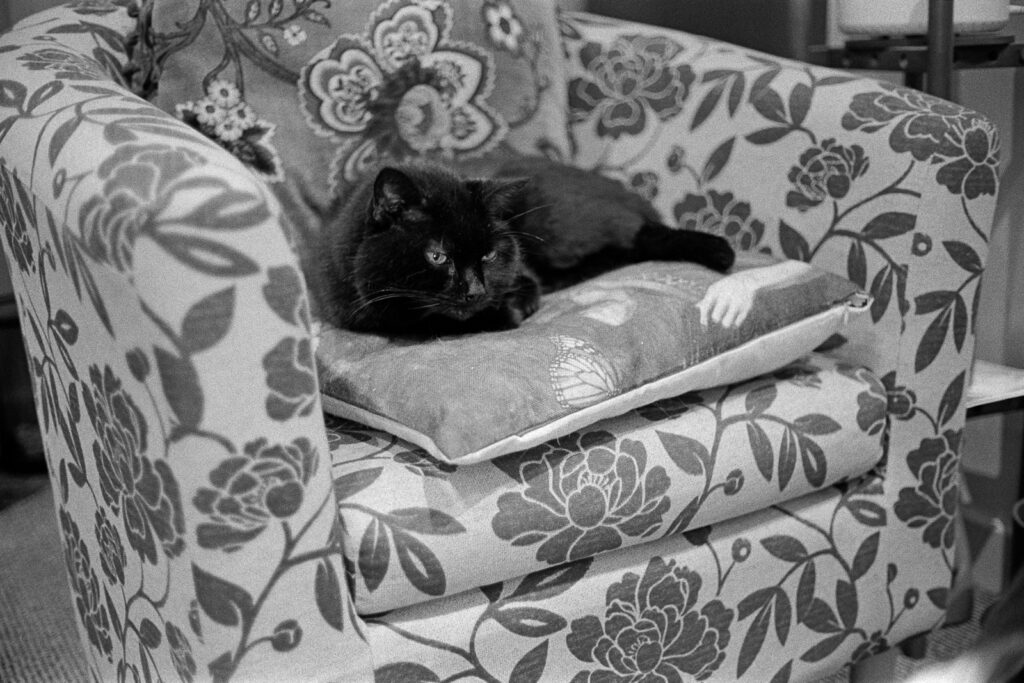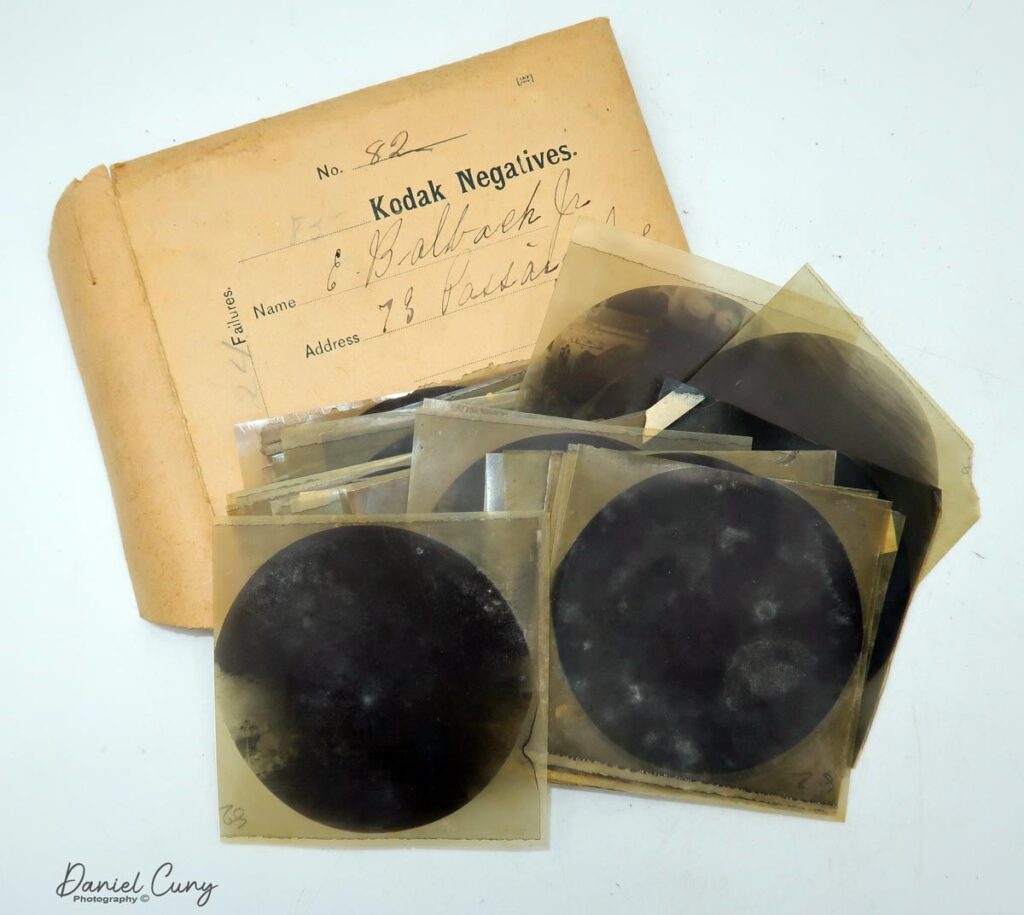For an upcoming trip to Japan, I decided I wanted to travel fairly light (camera-wise!) using just my shoulder-bag. Whilst my backpack holds lots of gear, fishing out the camera, or changing lens, is rather awkward in cities.
However, I also knew I wanted to take both my digital camera and also a film camera. Two interchangeable-lens cameras was going to push the space and weight for a small bag too much, and my smaller film option (a Ricoh 500ME my wife let me steal) has never given me great results- the metering never seeming to be correct, and the relatively slow and basic lens not ideal.
I began to research compact point-and-shoots, but most of them were a bit too automatic for my tastes, and rarely had faster lenses. Eventually I stumbled across articles about the Olympus 35 SP and things looked up – manual controls (and it functions even if the battery dies as long as you can meter some other way!), a well-regarded lens with a fast 1.7 aperture, classy retro styling and a handy spot-metering function all sounded perfect.

My searches across a well-known auction site showed plenty for sale, but there was the usual mix of “a bit of fungus” and “meter doesn’t work”. The best ones all seemed to be in Japan. In the end, I put my faith in one that was advertised as “near-mint” and fully functioning. Although it seemed slightly ridiculous to get one shipped over to the UK (along with the customs fee…) only to carry it back to Japan a few weeks later, I placed the order.

It arrived remarkably quickly – shipped on a Sunday, and arrived on Wednesday! I’d already ordered a special battery – being of a certain age, the camera was designed for the 1.35v mercury cells which are no longer sold, but you can now get Zinc-Air replacements which should let the metering continue to work as intended. The downside is the battery life isn’t very long, and as the camera doesn’t feature a power switch, it’s necessary to keep the camera in its case when not shooting so the metering cell stays in darkness.

I loaded up a roll of Kodak Tri-X 400 I had, and proceeded to run off some test shots. For the most part, I shot in auto, utilizing the spot-metering function. Auto requires you to set both the aperture and shutter speed rings to “A”, and the camera takes care of both. In low light it picks a wider aperture and slowish shutter speed, gradually stopping down as light levels increase, whilst also ramping up the shutter speed- there’s a graph in the manual.
As light levels are quite low in the UK at this time of year (late autumn, and endless cloud) I’m fairly sure most of my shots were wide open – I didn’t note the EV numbers shown in the viewfinder to cross-reference on the chart sadly. If the light level is so low that the meter “falls off the end of the scale”, the camera won’t release the shutter. This is either a handy safety-feature, or an annoyance, depending on your opinion!

I did shoot a couple of times in manual – this requires you to first set your preferred shutter speed, then look through the viewfinder to meter the scene (either average or spot) – this will give you an EV number on the display. You then rotate the aperture ring until that EV number is shown in the little cutout window. Once you’ve done this, you can grip both dials and move them together to change the shutter and aperture in sync, keeping the same EV value (so you if you want a shallower depth of field, the shutter speed increases accordingly). It’s a bit of a clunky process, and I will probably not bother unless I am specifically after a certain aperture for creative reasons. This was probably the main downside of the camera for me – my general preference with my SLR and digital cameras is to use aperture priority, but that’s not an option here.

Focusing was pretty straightforward – the rangefinder patch is quite small but in decent light it’s easy enough. Low light and a lack of clear vertical edge to line up made things a little trickier of course.
Once the film was developed, I was pleased to see everything appears to be working correctly, with most of the shots correctly exposed. My focus was a little off in some images, and some of them were spoilt by a little camera shake- both of these down to a combination of slow shutter speeds and wide open apertures. Hopefully Japan will be a little brighter!
Share this post:









Comments
Bob Janes on 5 Frames with an Olympus 35 SP
Comment posted: 09/12/2024
I also found that the plastic on the wind-on lever became brittle and flaked off - I had to recreate a tip using some plasticote paint.
Comment posted: 09/12/2024
Martin on 5 Frames with an Olympus 35 SP
Comment posted: 09/12/2024
Comment posted: 09/12/2024
Art Meripol on 5 Frames with an Olympus 35 SP
Comment posted: 09/12/2024
The 35 SP was preceded by the lesser-known 35 LE (auto only) and 35 LC (manual only) released in 1965 and 1967, respectively. Produced from 1969 to ’72 the 35 SP is without question the crown jewel of the lineup. It retailed for an original price of 24,800 yen ($229.67) or 88,367 yen ($818.37) adjusted for inflation. It was followed by the 35 SPn in 1972 which added a battery check light and some cosmetic changes and finally the 35 UC in 1973 which had even more cosmetic changes. All of these cameras share the same fantastic lens: the G. Zuiko 42mm f/1.7, which consists of 7 elements in 5 groups in a double-Gauss design. It has virtually no distortion and is sharp at all apertures, even the very useable f/1.7 maximum speed."
If I ever make it to Japan I'm going to need to take some empty luggage for the trip home.
Comment posted: 09/12/2024
Jeffery Luhn on 5 Frames with an Olympus 35 SP
Comment posted: 09/12/2024
I've owned a few Olympus cameras over the years and found the optics to be among the best in their price range. Olympus always wanted to be a small camera in a world of bloated competitors. The Olympus Pen half frame and the cute XA were very good performing small products. I'm going to keep my eye out for the 35 you used. It looks good! Thanks for sharing your comments and pix. Jeffery BTW... your cat certainly displays the attitude of a photographers feline!
Comment posted: 09/12/2024
davesurrey on 5 Frames with an Olympus 35 SP
Comment posted: 10/12/2024
It may be the heaviest but the lens sets it apart. Rather than use zinc-air batteries I use a 1.5v battery in an adapter.
Comment posted: 10/12/2024
Comment posted: 10/12/2024
Des McSweeney on 5 Frames with an Olympus 35 SP
Comment posted: 11/12/2024
petrol station, such a great look! If it is not too private could you possibly tell me the extra costs of
importing from Japan as I have started to have a look around. as you point out there are only a
few uk options. I have recently sold my Leica and am already missing taking shots on Tri-X. All
the best. Des
Comment posted: 11/12/2024
Paul Quellin on 5 Frames with an Olympus 35 SP
Comment posted: 13/12/2024
Comment posted: 13/12/2024